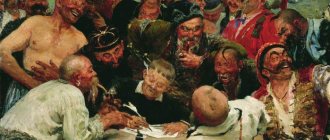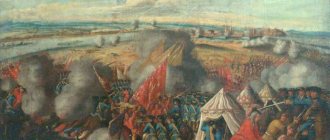History of the formation of the fortress
The hill where the Azov fortress was located is located on the left bank of the Don, 16 kilometers from the mouth itself. It was in this fortress that the Azov Seat took place. The area was well visible and controlled. Greeks in the 6th century BC built the city of Tanais here. It was named after the Don River, which the Greeks called Tanais. In the 10th-11th centuries, this city was part of the Tmutarakan principality of Kievan Rus. Then it was owned by the Tatar-Mongols. From the XIII-XV centuries it was a Genoese colony, which was called Tana.
In the 15th century, it was captured by the Turks, who turned the small and rich city into an impregnable fortress, which controlled the steppe terrain of the lower Don and the foothills of the North Caucasus. It has always been of strategic importance. The Turkish garrison and population were reliably protected by fortified walls with 11 towers, which were located in three lines:
- Toprak-kala is the first line of fortifications.
- Tash-kala is the second line of fortifications.
- Azov is the third line of fortifications, which, in principle, was the fortress itself.
The walls themselves were not impregnable, since they were not particularly strong, but three lines that had to be passed alternately under a hail of bullets, stones and cannonballs made it impregnable. Moreover, the light Cossack cannons could not punch holes in them through which it was possible to storm the fortress further. Therefore, before carrying out the Azov sitting, it was necessary to go through these levels of defense. It is also necessary to take into account the fact that for the assault it was necessary to overcome a wide ditch paved with stone. A Turkish garrison of four thousand and 200 cannons guarded the fortress.
Azov fortress in the 17th century
Azov occupied an advantageous geographical position at the mouth of the Don. In different eras the city was Greek, Russian (Tmutarakan Principality), Golden Horde, Genoese. Since 1471, the fortress belonged to Turkey. Azov was an important exit point from the Don to the Black Sea, so many conflicts of those years developed around the fortress.
By 1637, the citadel of the fortress consisted of three lines of stone walls (up to 6 m thick), 11 towers and a moat paved with stone (depth - 4 meters, width - 8 meters). Directly at the mouth of the Don, “special” watchtowers were erected on both banks of the river. Chains were stretched between them, which the ships could not overcome. The exit to the sea was covered with cannons from these towers. In the fortress itself by 1637 there were more than two hundred guns. The permanent garrison of Azov consisted of 4 thousand soldiers.
Azov was one of the major centers of the slave trade. Thousands of prisoners captured by the Turks and Tatars in Russian lands were constantly brought here. From here they were sent into slavery in the Ottoman Empire; here they were sold to Arab and Persian merchants.
Azov seat. Reasons for storming the fortress
Difficult relations have developed between the Cossacks, Crimean Tatars, and Turks inhabiting these places. The Krymchaks regularly raided Cossack settlements, destroying and burning them, taking captive inhabitants into slavery. The Cossacks also did not remain in debt, devastating Turkish and Tatar settlements. They repeatedly made forays to Azov, during which tribute was collected from the Turks in money, nets and other goods.
Having concluded an agreement with the Polish-Lithuanian Commonwealth in 1634, and taking into account Russia weakened by the Smolensk War, the Turks became bolder and often ravaged Cossack towns. The Cossacks learned that the Turkish Sultan had agreed with the Crimean Khan and the Nogais to go to war on Russian territories in the vicinity of the Don and clear them of Cossacks.
During the period of the events described, the Turkish army was at war with Persia, the Crimean Khan was distracted by the war with the Moldavian prince Cantemir. Therefore, it was difficult to imagine a more suitable time to take the fortress. But the Cossacks were well aware that the Turks would not give up the fortress just like that. They will fight desperately for her. Therefore, letters were sent to the Cossacks of the Zaporozhye Sich, Yaik and other areas of their residence. The Cossacks wrote to Moscow about this, asking for help.
Interesting: 10 amazing places that tourists should see
In addition, Azov became the center of the slave trade, where Christians captured during devastating raids were sold; they were in demand in the East. Taking advantage of the circumstances that prevailed in 1637, the Cossacks decided to attack Azov, in which the Azov siege continued for about five years. They were joined by fishermen, merchants, workers, and more than a thousand Zaporozhye Cossacks.
How did the Don Army take Azov (1637-1642)?
Page 1 of 4
Azov, the oldest city on the Lower Don, was founded in 1068. Since 1471, the city became part of the Ottoman Empire. The city under Turkish rule became the organizing center for attacks on the southern Russian outskirts. The city was also a center of the slave trade, where slaves were prisoners taken from the southern Russian districts during the Nogai and Crimean Tatar campaigns against them. For the Don Cossacks, especially those located on the Lower Don, Turkish Azov was, judging by written sources, the most important object of their attacks already from the middle of the 16th century. The most successful Cossack attack on Azov was in 1576, when they captured the Azov suburb of Toprakaly.
The Cossacks experienced a temporary distraction from the fight against Azov during the Time of Troubles with difficulty. As they wrote to Moscow in their letter of 1613, “we, your servants, had the best zipun all the days near Azov, and went to the sea, but now, sir, the transports are not ours, if we are at peace with Azov.” . With the end of the Time of Troubles in Russia, the struggle of the Cossacks with Azov resumed. The largest attack of the Cossacks on Azov in the 20s was the actions of 1625. Before this there was an attack on the Cossacks by the Azovians, when they burned five Cossack towns. First, the Cossacks took the tower on Kalancha by storm. Then 4,500 Cossacks went to Azov and took the corner tower. However, “at that time the tower collapsed and interfered with them, and their ataman Epikha Radilov was wounded.” This allowed the Turks to repel the Cossacks from Azov. In the spring of 1626, a new major campaign of the Don and Zaporozhye Cossacks took place near Azov.
The Cossacks managed to break some of the towers on the fortress. Overcoming the crisis in relations with the Russian government in 1632 contributed to the intensification of Cossack actions against Azov. In 1634 they made two trips. The second campaign was especially successful, in October, when they “knocked out a twelve-fathom city wall with a shell, and other Cherkassy were in the city.” This campaign represented a serious attempt to take the city.
Plan of the Azov fortification
Against the background of intensified actions of the Don Army against Azov, the general situation gradually changed. In 1634, under the pressure of the Kalmyks, the movement of the horde of Big Nogais began from the Volga to the right bank of the Don, to Perekop. For the southern Russian districts, such movement created a certain threat. The Russian authorities instructed the Don Army to hold the Nogais near Astrakhan and on the left bank of the Don, but the Cossacks were unable to prevent the migration of the Nogais towards the Crimea. For the Don Army, such migration was beneficial. It weakened the position of Azov, which was deprived of cover from the Nogais. The weakening of Azov was felt by both the Cossacks and the Azov people themselves. Observers about. The Cossacks talked about the favorable consequences of their capture of Azov and said “to the entire Army... if the sovereign had ordered us to take Ozov, the bloodshed of the peasants and enslavement would have subsided, and Crimea would have been all under the sovereign’s hand, and the Nogai would have been with us in peace " The Cossacks made the decision to capture Azov without any notification to the Moscow authorities. The Military Circle in the Monastic Town, held on April 9, 1637, decided to take the city. Under the leadership of military ataman Mikhail Tatarin, the Don Army began the siege of Azov on April 21. The marching army gathered very quickly, in just two weeks. The Cossacks arrived to help the Don Cossacks. According to the “Historical” story about the capture of Azov, the marching army consisted of four regiments led by colonels and esauls. A ditch was dug around the city walls and wicker tours were laid into which earth was poured. The tours were placed at the distance of a stone thrown by hand from the city walls. Fighting began and lasted “day and night.”
Why did the Cossacks need Azov? A week later, on April 28, Ambassador S. Chirikov arrived on the Don with a royal salary. Ataman Ivan Katorzhny and the Cossacks arrived with him. The gunpowder treasury that arrived as part of the salary was immediately sent to Azov, since the Cossacks “wasted” the gunpowder they had. During the siege of Azov, the Turkish ambassador Thomas Cantacuzenus was with his retinue in the Monastic Town. Having found out the “approach thought” from the Don Troops, he tried to warn the Azov people about it, as well as the Turkish authorities in Taman and Kerch. But the Cossacks managed to capture two people sent by the ambassador for this purpose. The Cossacks did not believe that the Noahs were sent for fishing, since they “didn’t find any fishing nets... among Tomina’s people.” For attempting to warn the Turks, the ambassador and his men were executed on June 5 by the verdict of the Military Circle. The capture of Azov occurred thanks to the undermining of the fortress wall under the leadership of the Cossack Ivan Aradov. The first dig was unsuccessful. The second, carried out right under the wall, led to the destruction of the wall on June 16 at 4 a.m. The Cossacks rushed forward. On the other hand, the Don Cossacks, together with the Cossacks, climbed the wall. “Veliya slaughter and self-made shooting” went on all day, after which the Azov men ran towards the Kagalnik River. The Cossacks caught up with them and “everyone in the steppe. bow under the sword." Azov was taken and became the main city of the Don Army. The Cossacks received direct access to the Sea of Azov. The capture of Azov by the Don Army was not only of great importance. It was unexpected both for the Turks, and for the tsarist authorities in Moscow, and for European countries, and for the Shah's Persia, which waged a constant war with the Ottoman Empire. The Russian government very soon realized the benefits for itself from the presence of the Don Army in Azov and provided the Cossacks with increased economic support. At the same time, the destruction of the fortress was great. To repair the Azov fortifications, the Don Army hired Greek craftsmen who “sealed” the breaches in the walls. With the capture of Azov, the Cossacks gained access to the sea. According to Evliya Celebi, in the summer of 1637 they operated with 150 seagulls, “burning and devastating cities” on the Turkish coast. In Azov they expected the arrival of the Turks. But by the autumn of 1637 it became clear that there was no need to wait for the Turks until next summer. As a result, military discipline fell among the Cossacks. They, as witnesses noted, “live simply and carelessly and drink incessantly, and they have no guards around the city and no outposts for any side.”
- Forward
Preparing for the assault
The Don Cossacks wrote a letter to Tsar Mikhail Romanov, in which they told about the reasons for the decision to go to Azov. They, of course, counted on being supported by the tsar and the government. But Russia after the Smolensk War was weakened. In addition, by going to openly help the Cossacks, she would have gotten involved in a new war with the Turks. This was fraught with the fact that the Poles, bound by the treaty with Istanbul, would certainly begin military operations in the west.
Circumstances developed in such a way that the Russian state was unable to wage a full-scale war on two fronts. Therefore, the Cossacks were given the freedom to resolve this issue themselves. In mid-January 1637, a military circle was convened, at which it was decided to storm the Azov fortress. Warriors began to gather from all sides. There were 4.5 thousand people in total who wanted to go to Azov. A large Cossack circle, gathered in the Monastery town, set a day and approved the plan for the campaign. The Cossacks chose Mikhail Tatarinov as their marching ataman. Foot soldiers on ships sailed to Azov along the river, while horse soldiers set off under their own power along the shore.
Azov siege seat. Beginning of the siege of the fortress
The siege began on April 21, 1637. For this purpose, the Cossacks built fortifications along the fortress walls, which consisted of ditches and ramparts. Next, an embankment was made in front of the walls. This was done so that it was possible to climb to the very top of the walls. Russia secretly supported the Cossacks. Plows in the amount of 49 ships arrived along the Don from Voronezh, loaded with provisions, gunpowder, cannonballs, cloth, and the nobleman Chirikov, the Tsar’s envoy who brought the caravan, handed over 2 thousand rubles, which at that time was a lot of money.
It was possible to damage the thick fortress walls with the fire of light Cossack cannons in several places, but it was impossible to launch an assault through these holes. I had to dig a tunnel twice because I couldn’t reach the wall the first time. But it worked the second time. She was undermined. As a result of this, a 20-meter gap was formed, through which the Cossacks were able to get into Azov. On the opposite side, siege ladders were used, along which the attackers also entered the city.
Capture of Azov by the Cossacks
The Turkish garrison resisted fiercely. For three days there was hand-to-hand fighting on the streets of Azov. Strong and prolonged resistance was provided by four towers, each of which contained 30-50 soldiers. They could not take one tower for three days. The Cossacks freed captured Orthodox Christians who had been captured by the Turks for sale. There were more than 2 thousand of them.
Interesting: A police captain is... Reasons for appearance, responsibilities
The losses of the Cossacks amounted to about one thousand people, who were honorably buried. The enemies were not buried, but thrown directly into the Don. This continued, according to eyewitnesses, for a whole week. The nobleman Chirikov left the fortress on July 16 and only in September, having reached Moscow, he reported that the Azov fortress was in the hands of the Cossacks. The Azov sitting began.
Position of the Moscow State
Moscow supported the Cossacks and did not want a quarrel with the Turks, since it was not ready for war with them. To the claims of Sultan Murad, she responded that she had nothing to do with the capture of Azov, while calling the Cossacks “thieves” who disobeyed and seized the fortress themselves. The Turks did not believe, but admitted that the Cossacks could capture the fortress themselves, since they had stormed it several times before. Moscow continued to supply the Donetsk people, sending them 1.6 tons of gunpowder, 2.4 tons of lead and the royal banner.
The beginning of the Azov seat of the Cossacks
The Donchak people did not waste time, prepared provisions for the year, repaired the walls of the fortress, and placed cannons on the towers and walls. She was ready to repel any attack. He didn't have to wait long. The Turkish Sultan ordered the Crimean Khan to launch an attack on Azov.
At the beginning of August 1638, the Crimean troops approached the fortress and besieged it, but did not storm it. The Cossacks made forays, inflicting significant damage on the Tatars and Nogais, who offered a large reward so that they would leave the fortress without a fight, but this offer was rejected. After standing under the walls of the fortress, the Crimean Tatars went home, never deciding to storm.
The Cossacks created a flying cavalry detachment, its number was 400 people. He kept the steppe under control, making regular raids on it. Russian people and Cossacks flocked to the fortress from all over the steppe. Merchants came here mostly from Russia, Turkey and Iran. Azov was turning into a trading city, but fearing spies they were not allowed into the fortress itself.
Unequal confrontation
The Turks did not want to leave Azov. To besiege the fortress, they recruited soldiers throughout the Ottoman Empire from among the nationalities living in it: Greeks, Armenians, Moldovans, Serbs, Bulgarians. The Crimean Khan gathered more than 40 thousand soldiers. Large battering guns and cannons were transported to Azov by river and land. A powerful and numerous Turkish fleet stood off the coast of Anapa. Its total number consisted of about 170 large ships and 90 small ones. The total number of Turkish troops is not known for certain, but according to unverified sources from 120-200 thousand people, a significant part of them participated in the siege of Azov.
The garrison numbered more than a thousand people. The Cossack circle announced a gathering of Cossacks in all cities, and those who did not express a desire to go to Azov, it was proposed to destroy, thus, more than 5 thousand Cossacks and Russian people were collected in Azov, who reached the fortress in different ways to take part in the Azov meeting of the Don Cossacks .
This continued during the siege. The Orthodox Christians swam and underwater using reed tubes to reach the besieged. This has become widespread. The Turks even blocked the Don with a palisade. Despite the Turkish and Tatar patrols, volunteers in small detachments reached the besieged Cossacks.
Interesting: Mikhail Frunze - winner of Kolchak and Wrangel
Azov campaigns of Peter I
The Turkish fortress of Azov blocked Russia's access to the Azov and Black Seas. Raids on Russian soil continued, the Russian state paid tribute to the Crimean Khan. Peter I, who came to power, decided to secure the southern borders of Russia by capturing Azov, a strategically important fortress, from the Turks.
First trip
In the winter of 1695, sea and river combat vessels were built on the Don. The plan for war with Turkey was not hidden: the calculation was based on surprise, they planned to take the fortress on the move.
On July 5, the emperor's 30,000-strong army, supported by 170 guns, approached Azov. They decided to storm the fortress after a month-long siege, which went on in vain. The Turkish commanders, who learned of Peter's intentions, strengthened the Azov garrison with 10 thousand soldiers, who interfered with the construction of the siege camp and attacked the Russian convoys.
On August 5, the assault began, which cost the Russian army one and a half thousand killed and ended in the defeat of the army of Peter I.
Second trip
Failure did not break the will of the tsar: Peter decided to act against Azov not only with ground forces, but also with the navy. Under the leadership of the emperor, they built two battleships (these are powerful heavy warships), 4 fire ships (vessels loaded with explosives), 23 galleys - warships that move with oars, as well as small ships.
The ground army under the command of Marshal A.S. Shein numbered 75 thousand people. The tsar, who participated in the siege with the rank of captain on a galley, took overall command of the army and navy. At the beginning of June 1896, the Russian flotilla under the command of Admiral Lefort blocked Azov from the sea, and the army besieged the fortress from land. On July 19, the fortress surrendered.
The Turkish garrison was allowed to leave Azov with personal weapons, families and property. Russia gained access to the sea. The winners were greeted solemnly. Lefort entered the city in a golden royal sleigh. Sea captain Pyotr Mikhailov modestly walked behind Lefort's chariot.
The Azov fortress was restored, increasing the height and thickness of the walls. Russia gave the rebuilt and fortified citadel to the Turks without a fight in 1711 after the unsuccessful Prut campaign of Peter’s army. In 1736, Russian troops under the command of Field Marshal Lassi again captured Azov, which forever went to Russia.
After 20 years, by decree of Catherine II, the fortress was restored, and in 1810 it was abolished, after which the Azov Posad quarters gradually grew here.
Siege of the fortress
In June 1641, the Turks besieged Azov from all sides, dug trenches in which they installed wall-breaking guns, attaching them with chains. This was done for a reason, since very often the Cossacks made forays, taking the guns with them. Siege cannons were constantly fired at the walls of the fortress, causing significant destruction. Small Turkish ships entered the Don and stood opposite the fortress. The Azov seat of the Don Cossacks began.
They dug secret tunnels and passages from the fortress, through which they made unexpected and very successful forays, causing irreparable damage to the Turks. All this sowed panic in the ranks of the besiegers. They could not understand where the Cossacks would appear next time. In addition, they set up peculiar traps and pits in which many Turks died. The besieged dug under the Turkish positions and blew them up. This underground war became a real disaster for the besiegers, claiming thousands of lives. Many Turks, unable to withstand the long siege and constant fear at night, began to leave.
The walls were regularly hit by siege weapons, which reduced them to ruins. The Cossacks left their homes and began to live in dug-out dugouts. Having destroyed the walls of Toprak-kala, the Turks launched an assault twice, but were repulsed. Unable to defend the destroyed walls of this level of fortifications, the besieged went to Tash-kala. After the destruction of its walls, they concentrated in the Azov fortress itself, continuing to dig underground passages towards the enemies, in which hundreds of Turks died.
Strengths of the parties
The Turkish garrison of Azov (commander Pasha Mustafa Agha) numbered 5.9 thousand people, had St. 220 guns. The number of Russian ground siege forces varied: for example, in April it was approx. 14 thousand people (including almost 3.9 thousand irregular troops) with 4 guns, and in June - more than 25 thousand people. and St. 130 siege weapons. In May, the Don military flotilla (at least 15 galleys, several dozen sailing and rowing ships; commander Rear Admiral P.P. Bredal) began arriving at the Russian siege camp.
Victory of the Cossacks
The Turkish army ran out of food and ammunition. The Turkish commander, Hussein Pasha, asked the Sultan for reinforcements in August 1641. The Cossacks took advantage of the temporary respite, continuing to dig passages under the Turkish positions and strengthening the walls. After help arrived, the Turks began to wear down the besieged with continuous attacks both night and day.
During this time they made 24 attacks, but were repulsed. At the end of September, the Turkish government lifted the siege due to supply difficulties. Thus ended the Azov sit-down, which lasted more than 3.5 months. The total losses of the Turks, according to the smallest estimates, ranged from 25 to 70 thousand people. The Cossack garrison also suffered significantly, losing more than 3 thousand people.
After the departure of the Turks, the Don Army faced the difficult task of what to do with the Azov fortress. More than half of the garrison was killed or died from wounds, and the walls of the fortress and city were completely destroyed. It was clear that the Turks, having gathered strength, would return. A delegation led by Ataman Vasiliev was sent to Moscow, which asked to send troops to help the Cossacks.
But the tsar, the government and the boyar duma were in no less difficulty, knowing full well that they could not help the Cossacks, since the Polish-Lithuanian Commonwealth, taking advantage of this, would unleash a new war on the western borders of Russia. The convened Zemsky Sobor decided to abandon the fortress, despite all its importance, since helping with troops meant starting a war with Turkey. At that moment it was like death. The Cossacks received this news with bitterness and left the fortress in the summer of 1642.
The main stages of the siege of Azov
The siege of the fortress lasted from June until the end of September 1641. During this time the Turks used:
- hours of artillery shelling in combination with wall attacks;
- "land war";
- continuous assault day and night.
The powerful pressure of the Turkish army already in the first days destroyed 8 towers and demolished internal buildings. But the Cossacks gave a worthy rebuff. The invaders suffered terrible human losses. Already in mid-July, the defenders had to hide behind the last wall. The outer lines of defense were occupied by the Turks.
In July and August, the opponents fought a “land war.” Over the course of a month and a half, the Turks made 17 mines. But the Cossacks did not sit idle. They made forays into the enemy camp. The soldiers undermined earthworks and captured Turkish ships with ammunition.
As a result of sabotage, a colossal number of enemies died. It is known that just one landmine explosion wiped out about 3 thousand Janissaries from the face of the earth. And the explosion of the earthen rampart was so strong that the blast wave even carried away the army commander’s tent.
At the beginning of autumn, the invaders launched a brutal offensive. They attacked around the clock. Thanks to the large number of fighters, the Turks changed units, giving their soldiers a break. The Cossacks had to fight day and night. At that time, no more than 2 thousand people remained. But they managed to repel 24 assaults. On September 26, the Turks retreated.











